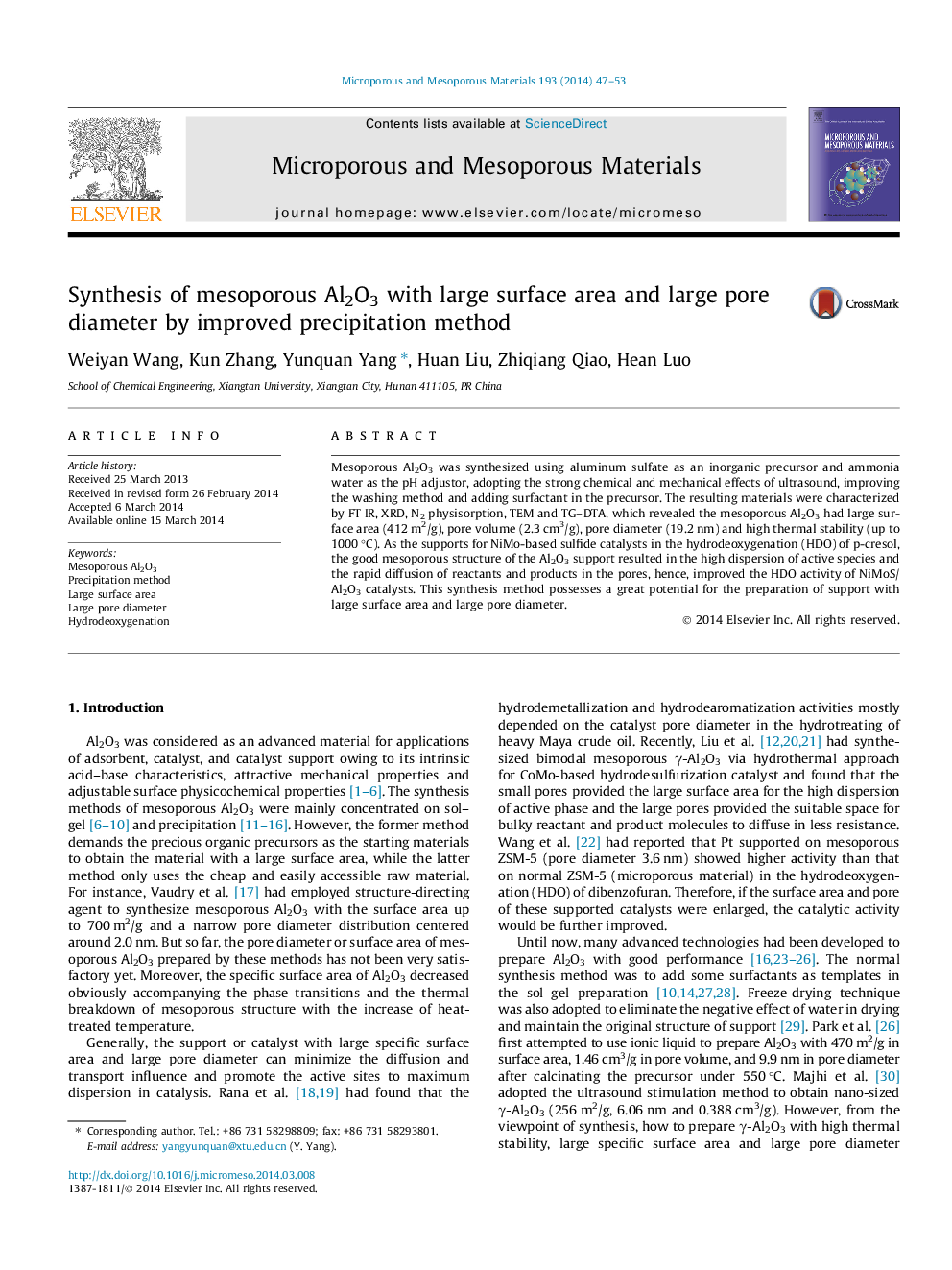| Article ID | Journal | Published Year | Pages | File Type |
|---|---|---|---|---|
| 73038 | Microporous and Mesoporous Materials | 2014 | 7 Pages |
•Mesoporous Al2O3 was synthesized by improved precipitation method.•Al2O3 possesses large surface area (412 m2/g) and big pore diameter (19.2 nm).•Large surface area enhances the dispersion of active species.•Big pore diameter improves the diffusion rate of reactants and products.
Mesoporous Al2O3 was synthesized using aluminum sulfate as an inorganic precursor and ammonia water as the pH adjustor, adopting the strong chemical and mechanical effects of ultrasound, improving the washing method and adding surfactant in the precursor. The resulting materials were characterized by FT IR, XRD, N2 physisorption, TEM and TG–DTA, which revealed the mesoporous Al2O3 had large surface area (412 m2/g), pore volume (2.3 cm3/g), pore diameter (19.2 nm) and high thermal stability (up to 1000 °C). As the supports for NiMo-based sulfide catalysts in the hydrodeoxygenation (HDO) of p-cresol, the good mesoporous structure of the Al2O3 support resulted in the high dispersion of active species and the rapid diffusion of reactants and products in the pores, hence, improved the HDO activity of NiMoS/Al2O3 catalysts. This synthesis method possesses a great potential for the preparation of support with large surface area and large pore diameter.
Graphical abstractMesoporous Al2O3 with large surface area (412 m2/g), large pore volume (2.3 cm3/g), large pore diameter (19.2 nm) and high thermal stability (up to 1000 °C) was prepared adopting the strong chemical and mechanical effects of ultrasound, improving the washing method and adding surfactant in the precursor to. NiMoS supported on these mesoporous Al2O3 exhibited high activity in the hydrodeoxygenation of p-cresol.Figure optionsDownload full-size imageDownload as PowerPoint slide
